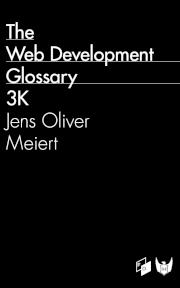Website Optimization Measures, Part XI
Published on December 14, 2020 (↻ July 14, 2023), filed under Development and Design (RSS feed for all categories).
Welcome to another round-up of the last improvements I implemented on my websites. Is this useful for your own work? Let me know, please!
-
Updating http to https links. Not every site has HSTS set up (not every site even is on https), and even if a redirect mechanism is available, any redirection is a performance hit. To keep users on secure connections and to contribute to a good user experience even if they leave a site, it’s useful to point to resources on secure protocols (there’s a brief chapter on this in Upgrade Your HTML II). Long story short: I regularly look for http links, check whether there’s a secure equivalent, and then update the respective links—and that’s what I did again over the last few weeks.
-
Taking the time to replace rotten links with their archive.org counterparts. I used to respond to link rot with looking for alternative posts or removing such links—nowadays I look for a copy in the Internet Archive. This is fast and safe, and again allowed me to save a number of links.
-
Collapsing tables of contents (through CSS). Tables of contents are useful, as long as they don’t get in the way. For some of my longer articles I flagged them as doing just that—distracting from rather than aiding the content. A CSS developer and long-time
:targetfan, I employed a no-JavaScript technique to hide the TOC list unless interacted with. I’ll leave it to you to decipher the (simple) method; one example would be… my tips for becoming a better driver (I almost forgot about that one 😅). -
Adjusting iconography. On meiert.com I don’t use many icons—one that carried some load was a white right pointing index [finger], or this friend: ☞. I switched to other symbols with “→” for certain navigation, “↳” for meta information, and “↩” for tables of contents. (The last one needs a usability test.)
-
Reviewing all posts for up-to-dateness (and checking comment links). I regularly patrol all my articles (and also books)—it’s an ongoing process. Why I’m calling the last review out is because it specifically involved checking whether the posts still give reasonable advice, and otherwise to add a note at the top that the respective post may be outdated. That I did, including taking samples of links in comments to fix or remove them if needed. This is all work, yes, but it’s mechanic and therefore somewhat grateful, and I like the idea that the writings and your and others’ experience benefits from it.
-
Checking on popular 404 errors and setting up redirects for them. I barely look at my websites’ stats—they are mere anonymous server logs anyway—, but if I do, then I do like looking at those URLs where there have been errors. For those URLs that get a bit of traffic—a few dozen hits per month—I set up redirects to whatever seems to be a suitable target (often just the homepage). It’s a light attempt to contribute to a more useful experience.
-
Ensuring CDN use. In the last episode I talked about how I re-implemented a CDN for several of my websites (by the way, I switched from BunnyCDN to CloudFront—better global availability). In the weeks after I tested and also implemented more, meaning I made sure CDN integration was broad and consistent. Not the biggest news item here, but I did like this revision of my CDN setup.
-
Reviewing privacy policies. To confirm I hadn’t missed anything over the past months, I took my privacy policy template to see whether it was still in good shape and accurate. It was; and I’m keeping an eye on it, including working with a paralegal. Which is strange to think of when you (in this case I) don’t collect any personal information, and don’t even use any analytics suite.
This was some of the latest I’ve been focusing on; how is it for you? What have you been up to lately?
This is a part of an open article series. Check out some of the other posts!
About Me

I’m Jens (long: Jens Oliver Meiert), and I’m a web developer, manager, and author. I’ve worked as a technical lead and engineering manager for small and large enterprises, I’m an occasional contributor to web standards (like HTML, CSS, WCAG), and I write and review books for O’Reilly and Frontend Dogma.
I love trying things, not only in web development and engineering management, but also in other areas like philosophy. Here on meiert.com I share some of my experiences and views. (I value you being critical, interpreting charitably, and giving feedback.)
Read More
Maybe of interest to you, too:
- Next: Ignore AMP
- Previous: Notes on HTML 3.2
- More under Development or Design
- More from 2020
- Most popular posts
Looking for a way to comment? Comments have been disabled, unfortunately.

Get a good look at web development? Try WebGlossary.info—and The Web Development Glossary 3K. With explanations and definitions for thousands of terms of web development, web design, and related fields, building on Wikipedia as well as MDN Web Docs. Available at Apple Books, Kobo, Google Play Books, and Leanpub.

